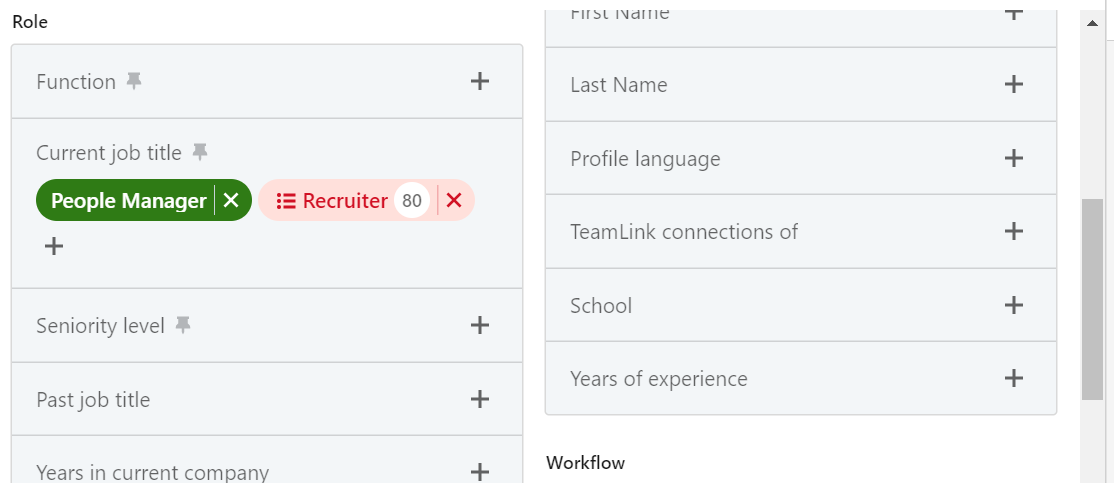Everyone wants your product!
That’s the dream, isn’t it? Any sales expert can tell you that there is no greater burst of serotonin than waking up to 20 people from your new marketing campaign all shouting “we want what you’re offering.”
But it isn’t always so cut and dry (people are complicated). So here we’ll show how lead grading is the key to help you close the feedback loop on your marketing campaigns and systematically improve your sales performance week over week.
As you open those emails, you notice at least five that have just the right need, and it’s the right time for them to buy.
Others, not so much. At least ten of them are simply asking for more information, so you send over a link and offer to schedule a call. Two more have given you names and an email to go with. Finally, there are three that have asked you to follow up with them at the start of the next fiscal year.
You scratch your head and think: “well, these are all technically leads, but some are ready to move faster than others.” The ones that require more messaging are great to have in your funnel, but it’s best to give more energy to the ones that want to move right away. After a while, you may begin to limit your outreach to cold leads.
It can be extremely gratifying to run a campaign for several months and see the “bad leads” from the beginning start to taper off and be replaced with only “good” and “great” leads. In practice, this is called lead grading. Here are 5 tips that can help you optimize your campaign’s strategy and to hit more great leads!
Define Lead Types
One part of lead generation that often comes up is the difference between warm and cold leads. It’s true that not all leads are the same. Sometimes prospects are ready to jump on the call even a few minutes after hearing your pitch. Other prospects can take months before they’re ready to consider your proposal seriously.
To begin grading, separate your leads according to where they are in the sales pipeline. Check out the prospect’s LinkedIn profile, investigate the details of who they are, their role, and their company — is this person a fit and who you want to target? Grade the lead appropriately so you know where it stands!
Ask yourself — what are next steps for each individual prospect? There’s an endless number of lead stages possible – here are five main ones you can start with:
- Prospects ready for a call or meeting
- Prospects who need more information
- Prospects who have asked for a follow-up at a later date
- Prospects who have provided a referral
- Prospects who ask clarifying questions about the pitch
Naturally, some of these prospects turn into a sales opportunity faster than others. Your job when grading these leads is to identify and separate the cold, warm, and hot leads. Provide follow-ups with everyone who needs it, but focus your energy on the ones you know will convert. Then, refine your targeting based on which patterns you see.
Establish Next Steps Based on Your Goals
Ideally, you and your team have established a full sales pipeline for your marketing campaign. When you have a certain number of leads come in every week, having a series of targeted next steps can help you know what conversations need to be happening on your calls.
Here are examples of goals that an established pipeline can help you fulfill:
We need to sell products.
We should be having conversations with people in our target markets.
We need to get the ball rolling on partnership opportunities.
Because only 10% of leads turn into paying customers, having these goals in mind for each phase of your lead generation campaigns can also help you define which types of leads are the most likely to convert. When you have a set process for what needs to happen on the introduction call, you limit the number of variables that can muddy your view of the leads that convert and the leads that don’t.
Refining Your Audience Targeting
So, you’ve been grading your leads for a while, and now it’s time to cut some of the dead weight from your outreach. The logical first step is to look for commonalities in the cold leads. Which factors keep these leads from making it all the way down the funnel?
This can be tricky. Especially when building your lists using tools like LinkedIn Sales Navigator, trimming audience segments becomes a balancing act.
Let’s say you’re targeting HR. Just because one “People Manager” had a role mostly focused on recruiting doesn’t mean that all professionals with that title are recruiters. Some are truly doing HR tasks. It wouldn’t make sense to cut out “People Managers” because of one special case.
Over time, you want to track these trends and calculate which audience segments and which campaigns are producing the highest ROI (and cut the ones with the lowest). Once you grade your leads, then you can perform these calculations and crown the winners of your split tests.
Sales Navigator is a nice tool because it has an “exclude” feature. In this case, you could easily include all people managers, but exclude “Recruiter” if that title didn’t align.

However, not all tools have this feature, so here’s a more general tip: compare your ideal prospect to the actual prospects in your lead funnel. Whatever isn’t in alignment is something you should strategically exclude from your prospect list – now that you know where to draw the line.
Lead grading for optimization is all about deciding which leads are worth the most time and effort and capitalizing on the positive. Doing this regularly will help you learn and improve your marketing efforts in each iteration.
Use Your Tools
At Speedwork, we have a specialized process that helps you give us feedback about the types of leads we’re finding for you. That way, we can start to notice the patterns and suggest changes.
Creating a system where you store your analysis of each lead can help you notice patterns early and help your team stay on the same page when changes need to be made. If lead generation and lead grading is a long system of trial and error, it’s essential to have a track record of what worked and what didn’t.
Keeping a detailed record of each lead and its evaluation also allows you to track the history of your campaign’s success, so that you can make more informed decisions moving forward.

Get a Team Like Speedwork to Help
This trial and error process may seem daunting at first, but there’s additional help available if you need it. At Speedwork, we provide expert assistance with generating and nurturing leads. We start by getting to know your company, then we collaborate with your team to build a detailed picture of your ideal lead. Finally, we reach out to this audience in a way that caters to their unique perspective. Best of all, we will help you optimize your outreach every step of the way, so that you can bring in the best results without burning too much time!
Want a better understanding of how this works? Check out our process or book a free consultation!
